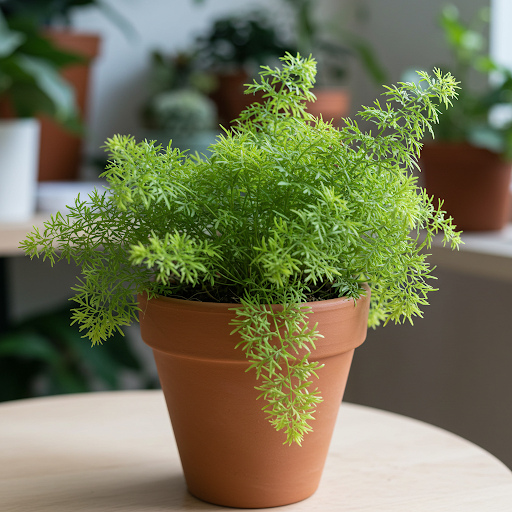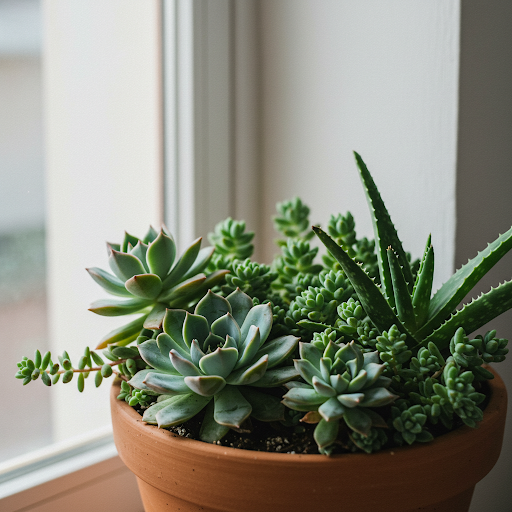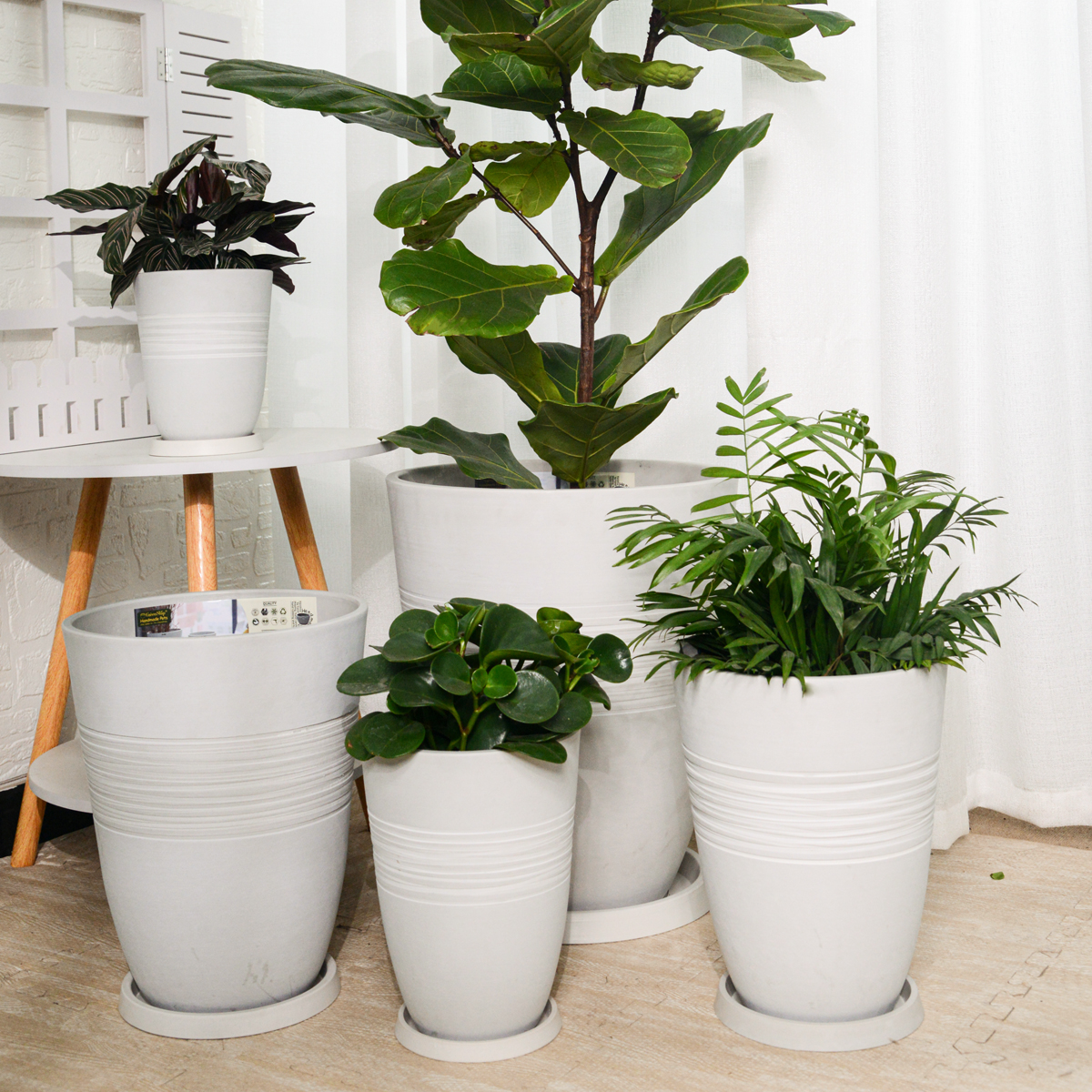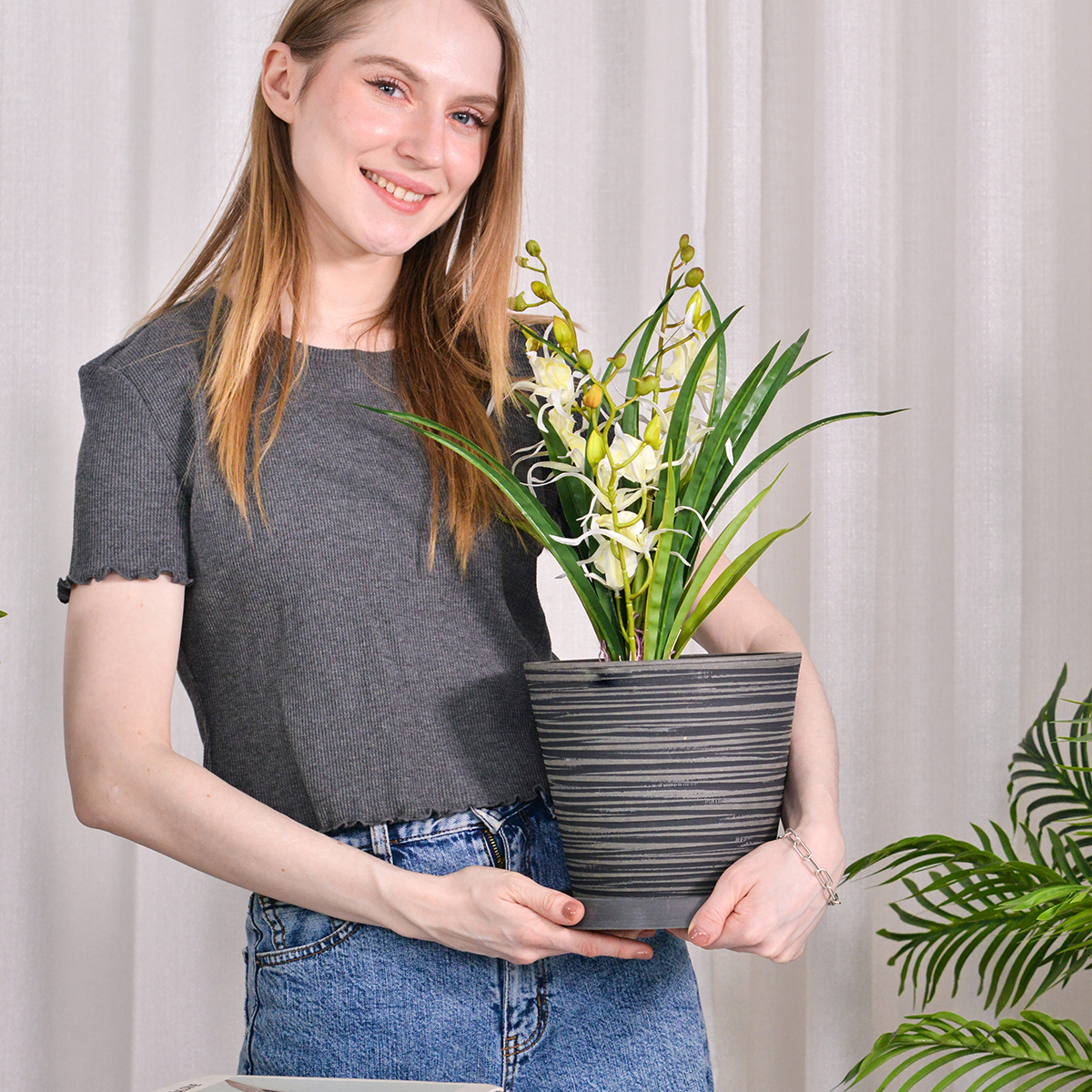Asparagus Fern Indoors: The Complete Guide to Growing Asparagus Setaceus at Home
Looking to add delicate, feathery foliage and a touch of whimsical charm to your indoor plant collection? Asparagus Fern, scientifically known as Asparagus setaceus, is a beloved houseplant prized for its airy, lace-like foliage that resembles ferns, though it’s actually a member of the asparagus family. These elegant and relatively easy-to-grow plants are perfect for adding soft texture and graceful greenery to your indoor spaces. This comprehensive guide will provide you with everything you need to know to grow Asparagus setaceus indoors, from selecting the right plant and pot to mastering essential care techniques for a thriving and beautiful Asparagus Fern in your home.

Asparagus Fern
What is Asparagus Fern (Asparagus setaceus)?
Asparagus setaceus, commonly known as Asparagus Fern, Lace Fern, or Climbing Asparagus, is a species of evergreen perennial vine in the asparagus family (Asparagaceae). Despite its common name, it is not a true fern but is named for its fern-like, delicate foliage. Asparagus setaceus is native to Southern Africa and is celebrated for its soft, feathery, and finely divided leaves (cladodes) that create a light and airy appearance. It is a fast-growing plant that can be trained to climb or trail, adding a graceful and whimsical touch to indoor decor.
Can Asparagus Fern (Asparagus setaceus) Thrive Indoors?
Yes, Asparagus Fern (Asparagus setaceus) thrives exceptionally well indoors and is a popular choice for houseplants. Its adaptability to indoor conditions, relatively easy care, and beautiful foliage make it a rewarding plant for home cultivation. While it can tolerate some neglect, providing the right conditions will ensure lush growth and vibrant greenery.
Ideal Indoor Growing Conditions for Asparagus Fern (Asparagus setaceus):
- Varieties of Asparagus Fern (Asparagus setaceus): While Asparagus setaceus is the main species grown as Asparagus Fern, there are a few cultivars and variations available that offer slightly different appearances:
- Asparagus setaceus (Standard Form): The classic form with delicate, fine-textured green foliage.
- Asparagus setaceus ‘Nanus’: A dwarf or compact form, smaller in size, suitable for smaller pots and spaces.
- Asparagus setaceus ‘Pyramidalis’: A more upright and pyramidal growth habit.
- Asparagus setaceus ‘Plumosus’: Often used interchangeably with Asparagus setaceus, referring to the feathery, plume-like foliage.
- Light: Asparagus Fern prefers bright, indirect light. It thrives in locations that receive bright, filtered sunlight for several hours per day. East-facing windows are often ideal, providing gentle morning sun. North or west-facing windows can also work if the light is bright but diffused. Avoid direct, intense afternoon sun, which can scorch the delicate foliage, causing it to turn yellow or brown. Insufficient light can lead to leggy growth and less vibrant foliage.
- Soil: Asparagus Fern needs well-draining soil that retains moisture. Use a high-quality potting mix formulated for indoor plants or a general-purpose potting mix amended with peat moss, perlite, and vermiculite to improve drainage, aeration, and moisture retention.
- Watering: Asparagus Fern prefers consistently moist soil and is sensitive to drying out. Water regularly to keep the soil evenly moist, but not soggy. Water when the top inch of soil just begins to feel slightly dry. Water thoroughly until water drains out of the drainage holes. Never let the soil dry out completely, as this can cause the foliage to turn brown and crispy. However, also avoid overwatering and soggy conditions, which can lead to root rot. Watering frequency will vary depending on light levels, temperature, humidity, and pot size. Check the soil moisture regularly with your finger. Reduce watering slightly in winter when growth slows down.
- Temperature: Average room temperatures between 65°F to 75°F (18°C to 24°C) are ideal. Asparagus Fern is comfortable in typical household temperatures. Avoid exposing them to temperatures below 55°F (13°C) or sudden temperature fluctuations and cold drafts. They prefer warmth and consistent temperatures.
- Humidity: Asparagus Fern thrives in high humidity, mimicking its native tropical environment. Aim for humidity levels of 50-70% or higher. Dry air can lead to browning leaf tips and crispy foliage. Increase humidity by:
- Misting Frequently: Mist the foliage frequently with room temperature water, especially in the mornings and evenings.
- Pebble Trays: Place pots on trays filled with pebbles and water (water level below the pot base).
- Humidifier: Use a room humidifier, especially during dry seasons or winter heating.
- Grouping Plants: Grouping Asparagus Fern with other humidity-loving plants can create a more humid microclimate.
- Bathroom (if suitable light): A well-lit bathroom can be an ideal location due to naturally higher humidity.
Planting Your Asparagus Fern (Asparagus setaceus) Indoors:
- Starting from Potted Plants or Seeds: The easiest way to start growing Asparagus Fern indoors is to purchase established potted plants from nurseries, garden centers, or online retailers. They can also be grown from seeds, although seed propagation is slower and less common for home gardeners.
- Propagation from Seeds: Sow seeds indoors in spring in moist potting mix and keep warm and humid. Germination can be slow and somewhat erratic.
- Planting Time: Asparagus Fern can be planted or repotted at any time of year indoors. Spring or early summer, at the start of the growing season, is generally recommended for optimal establishment and growth.
Choosing the Right Pots for Indoor Asparagus Fern (Asparagus setaceus):
- Suitable Pot Types: Select pots with good drainage and moisture retention. Plastic, ceramic, or glazed terracotta pots are all suitable. Plastic pots are often a good choice as they help retain moisture, which Asparagus Ferns appreciate, and are lightweight.
- Drainage: Good drainage is important to prevent soggy soil and root rot, although Asparagus Ferns prefer consistently moist conditions. Ensure your chosen pot has drainage holes at the bottom. You can also add a thin layer of gravel or pot shards at the base of the pot to improve drainage slightly.
- Pot Size: Choose a pot that is appropriately sized for the current size of the plant and allows for some growth. Asparagus Ferns have moderately vigorous root systems. Select pots that are not excessively large. For smaller plants, start with pots that are 6-8 inches in diameter. Mature Asparagus Ferns may need pots 8-12 inches or slightly larger in diameter. If you want to train it as a climbing plant, a slightly heavier pot can provide stability.
- Potting Mix: Use a moist, well-draining potting mix as described earlier.
Essential Care Tips for a Thriving Indoor Asparagus Fern (Asparagus setaceus):
- Watering Schedule: “Keep Soil Moist, Never Dry”. Water regularly to maintain consistently moist soil. Check soil moisture frequently and water when the top of the soil just begins to feel slightly dry. Never allow the soil to dry out completely.
- Humidity is Crucial for Foliage Health: Maintain high humidity levels. Frequent misting, pebble trays, or humidifiers are essential for preventing browning and crisping of the delicate foliage.
- Light Management for Lush Growth: Provide bright, indirect light. Avoid direct sun. Monitor foliage color and growth. If foliage is pale or growth is weak, consider moving to a slightly brighter location. If foliage is scorched, reduce light intensity.
- Fertilizing for Vigorous Growth: Asparagus Ferns benefit from regular fertilization during the growing season (spring and summer) to support their vigorous foliage growth. Fertilize every 2-4 weeks during the growing season with a balanced liquid fertilizer diluted to half strength, or a fertilizer specifically formulated for foliage plants. Follow package instructions. Reduce or stop fertilizing during the fall and winter dormant period.
- Pruning for Shape and Size: Asparagus Fern can be pruned to maintain shape, control size, or remove any yellowing or brown foliage. Prune back stems as needed. Regular light pruning can encourage bushier growth.
- Support for Climbing/Trailing: If you want to train your Asparagus Fern to climb, provide a trellis, stake, or moss pole for support. It can also be allowed to trail from hanging baskets or elevated pots.
- Repotting Schedule: Repot Asparagus Fern every 1-2 years, or when they become root-bound or the potting mix is depleted. Repot in spring or early summer. They are relatively fast-growing and benefit from regular repotting into fresh potting mix.
- Pest and Disease Control: Monitor Asparagus Fern for pests like spider mites, aphids, and mealybugs. Dry air can make them more susceptible to spider mites. Increase humidity to help prevent spider mites. Root rot can occur if overwatered or drainage is poor. Ensure good drainage and avoid overwatering to prevent root rot. Treat any pest infestations promptly with insecticidal soap or neem oil.
Popular Asparagus Fern Cultivars and Forms:
- Asparagus setaceus (Standard Asparagus Fern)
- Asparagus setaceus ‘Nanus’ (Dwarf Asparagus Fern)
- Asparagus setaceus ‘Pyramidalis’ (Pyramidal Asparagus Fern)
- Asparagus plumosus (synonym of Asparagus setaceus) (Plume Asparagus Fern)

Asparagus Fern
In Summary:
Growing Asparagus Fern (Asparagus setaceus) indoors is a rewarding way to bring delicate, fern-like beauty and a touch of softness to your home. Their relatively easy care, coupled with their graceful foliage, makes them a beloved houseplant for adding texture and visual interest to indoor spaces. By providing bright, indirect light, consistently moist soil, high humidity, and regular care, you can easily cultivate a thriving and beautiful Asparagus Fern indoors and enjoy its airy elegance year-round.
For more detailed botanical information and to explore the characteristics of Asparagus Fern, you can visit the Wikipedia page on Asparagus setaceus.
Important Note: Asparagus Fern is considered mildly toxic if ingested and its sap can be irritating to skin for some individuals. It also has thorns (though they are small), so handle with care. Keep out of reach of children and pets who may be tempted to chew on the foliage, and wear gloves when handling if you have sensitive skin. The berries produced by mature plants (though less common indoors) are also considered toxic.
11TH
By greenship|2024-08-13T02:50:25+00:00August 13, 2024|Categories: Hand-carving Series|
Modern Plant Pots with Drainage – Indoor & Outdoor Use (6″ Widths)
By greenship-seo|2025-04-10T06:29:43+00:00February 6, 2025|Categories: Hand-carving Series|Tags: Decorative Flower Pots|
Modern Plant Pots丨Planter for Indoor Plants,8 inch or 10 inch Plant Pots with Drainage Hole,Decorative Flower Pots
By greenship-seo|2025-04-10T08:32:55+00:00January 7, 2025|Categories: Hand-carving Series|Tags: Decorative Flower Pots, Self-Watering Pots|
KC2-11VH
By greenship|2024-08-16T06:19:28+00:00August 16, 2024|Categories: Hand-carving Series|
k2-21G
By greenship|2024-08-13T06:17:26+00:00August 13, 2024|Categories: Hand-carving Series|
K2-11T
By greenship|2024-08-13T04:21:25+00:00August 13, 2024|Categories: Hand-carving Series|






